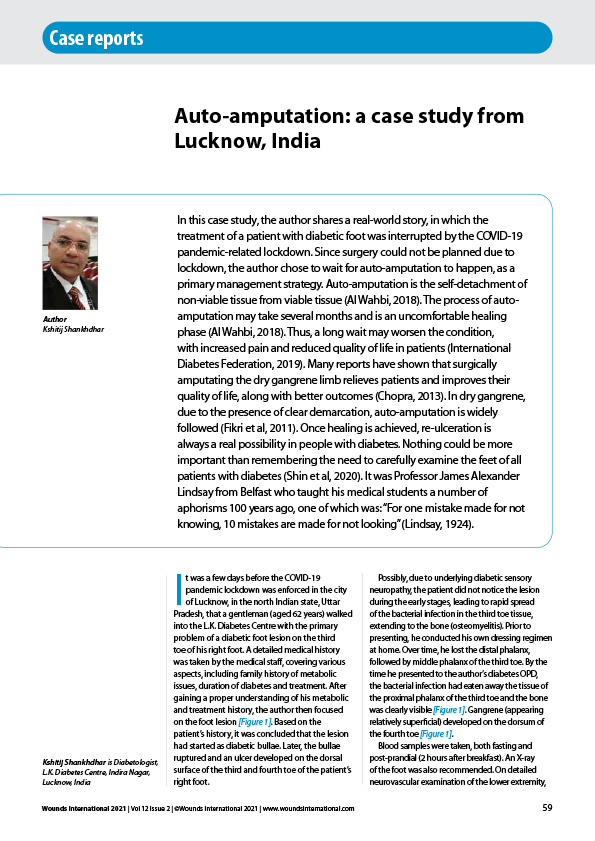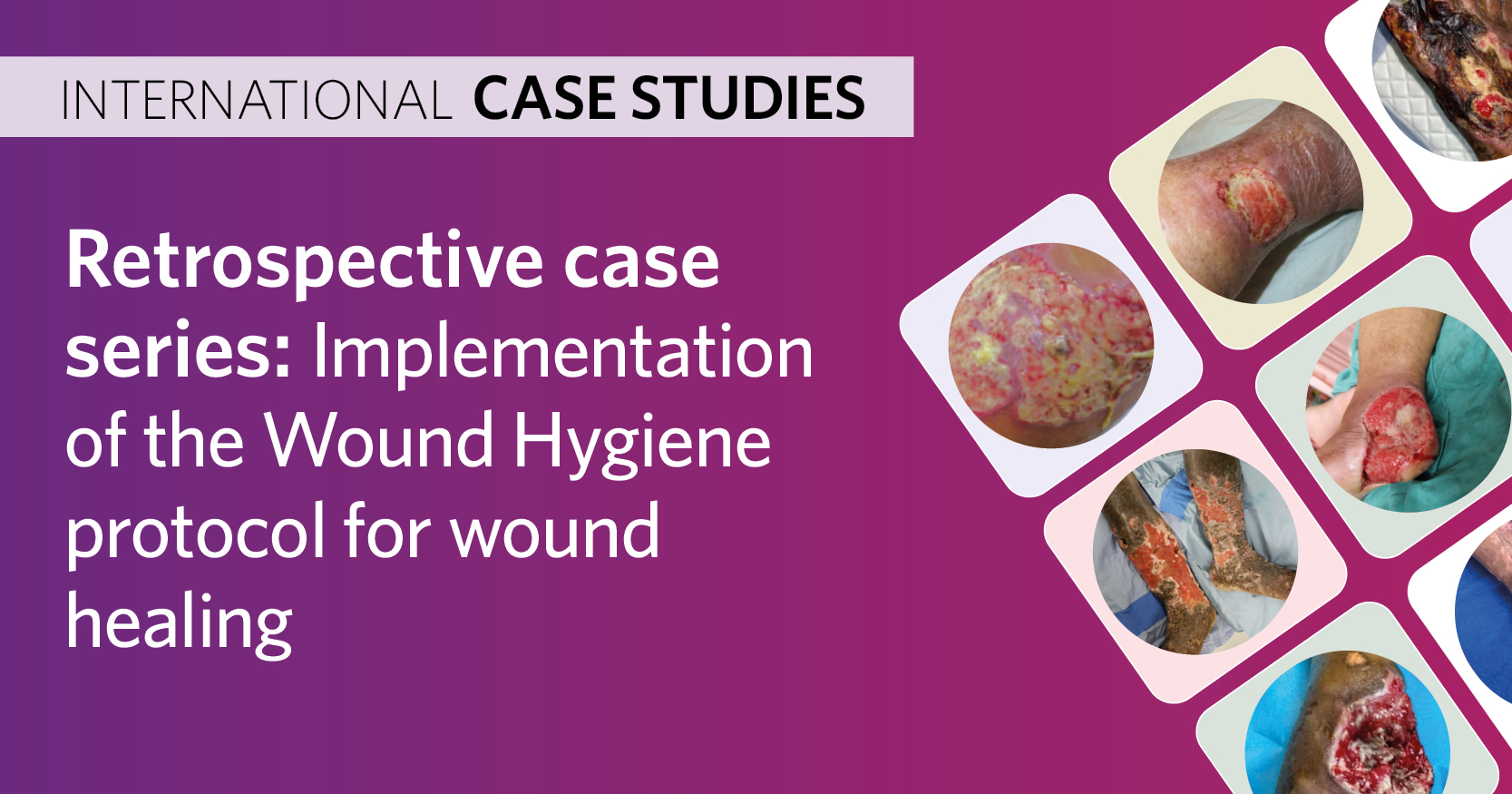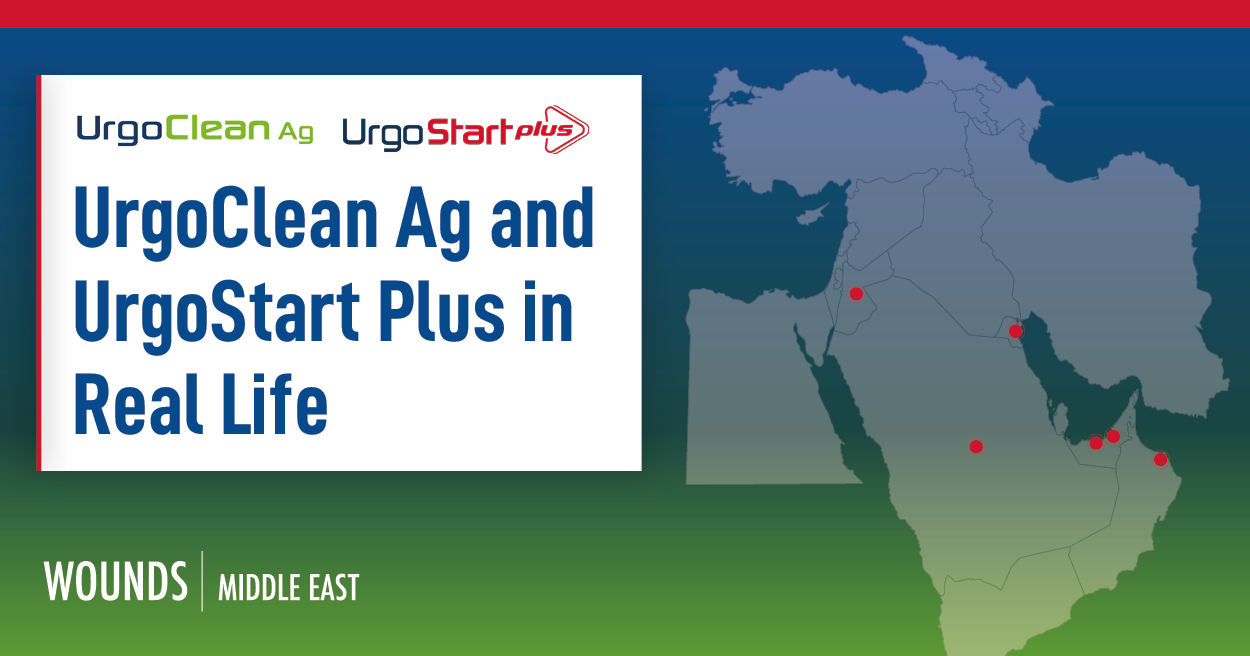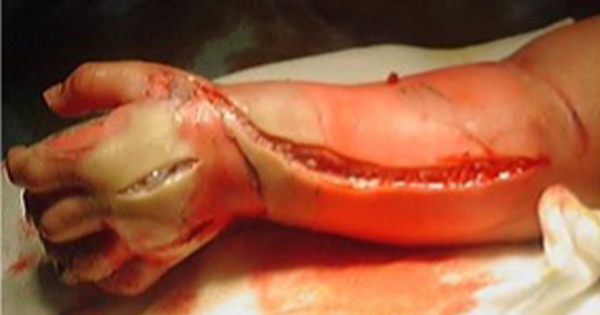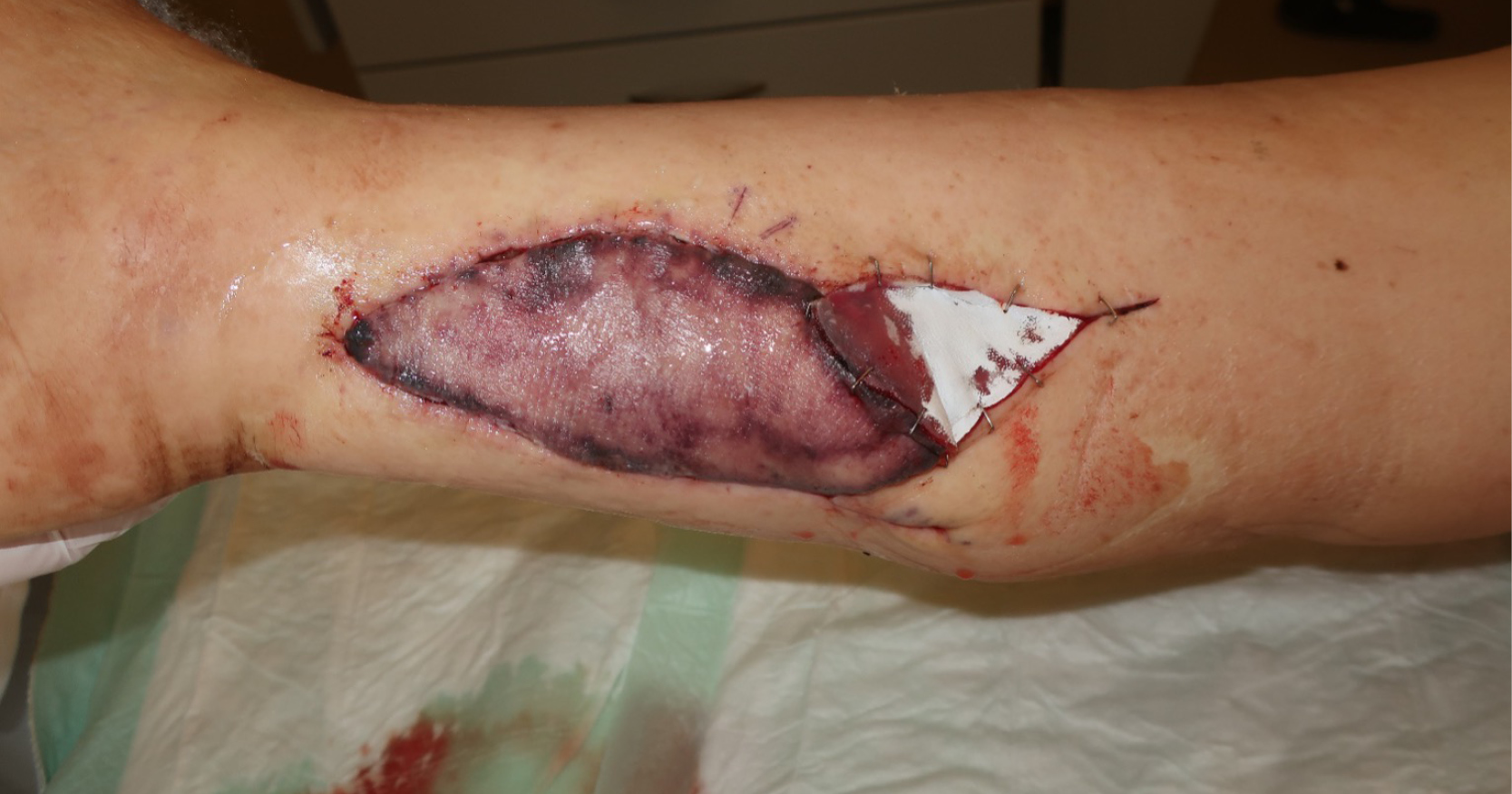In this case study, the author shares a real-world story, in which the treatment of a patient with diabetic foot was interrupted by the COVID-19 pandemic-related lockdown. Since surgery could not be planned due to lockdown, the author chose to wait for auto-amputation to happen, as a primary management strategy. Auto-amputation is the self-detachment of non-viable tissue from viable tissue (Al Wahbi, 2018). The process of autoamputation may take several months and is an uncomfortable healing phase (Al Wahbi, 2018). Thus, a long wait may worsen the condition, with increased pain and reduced quality of life in patients (International Diabetes Federation, 2019). Many reports have shown that surgically amputating the dry gangrene limb relieves patients and improves their quality of life, along with better outcomes (Chopra, 2013). In dry gangrene, due to the presence of clear demarcation, auto-amputation is widely followed (Fikri et al, 2011). Once healing is achieved, re-ulceration is always a real possibility in people with diabetes. Nothing could be more important than remembering the need to carefully examine the feet of all patients with diabetes (Shin et al, 2020). It was Professor James Alexander Lindsay from Belfast who taught his medical students a number of aphorisms 100 years ago, one of which was: “For one mistake made for not knowing, 10 mistakes are made for not looking” (Lindsay, 1924).

